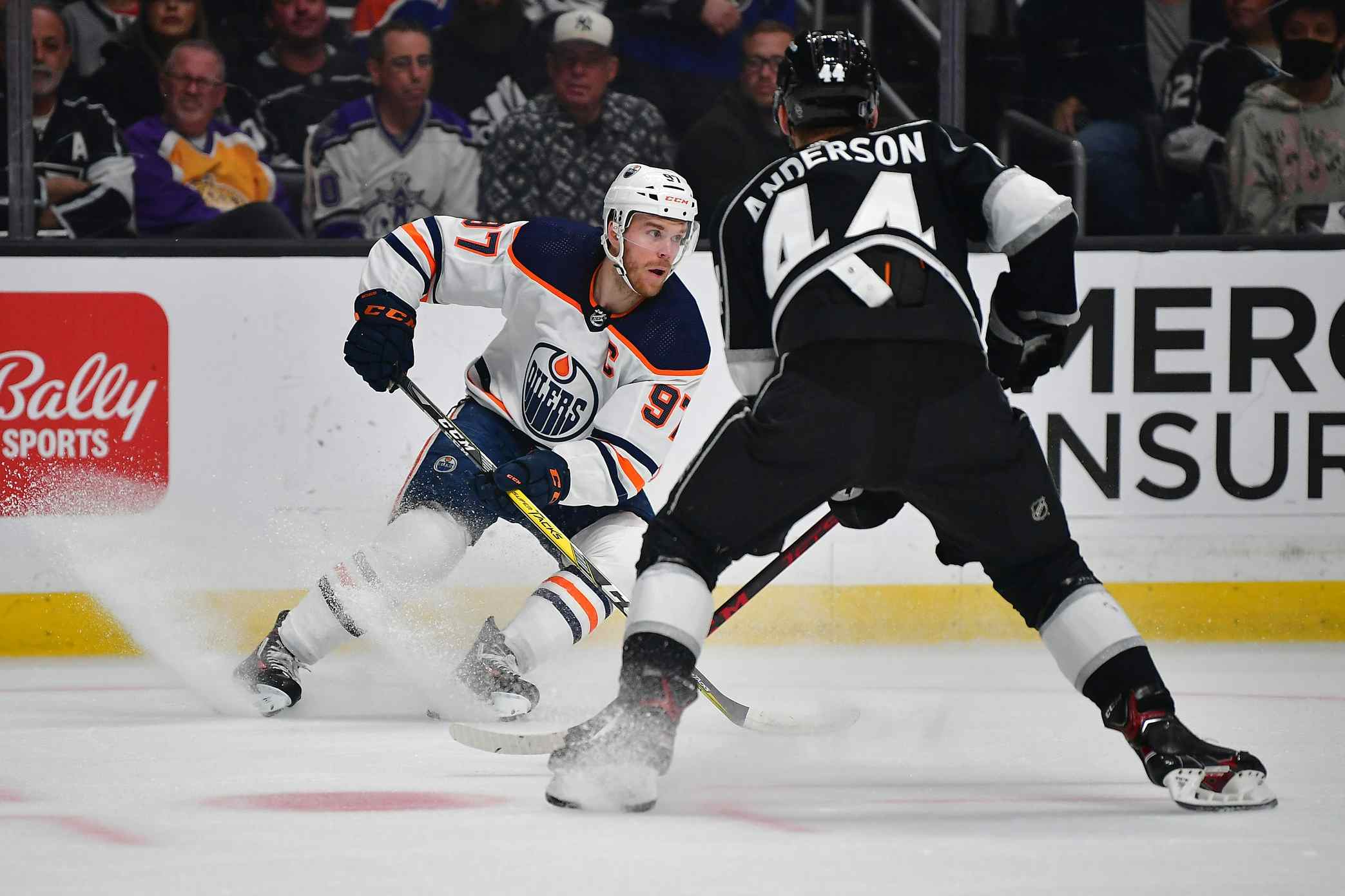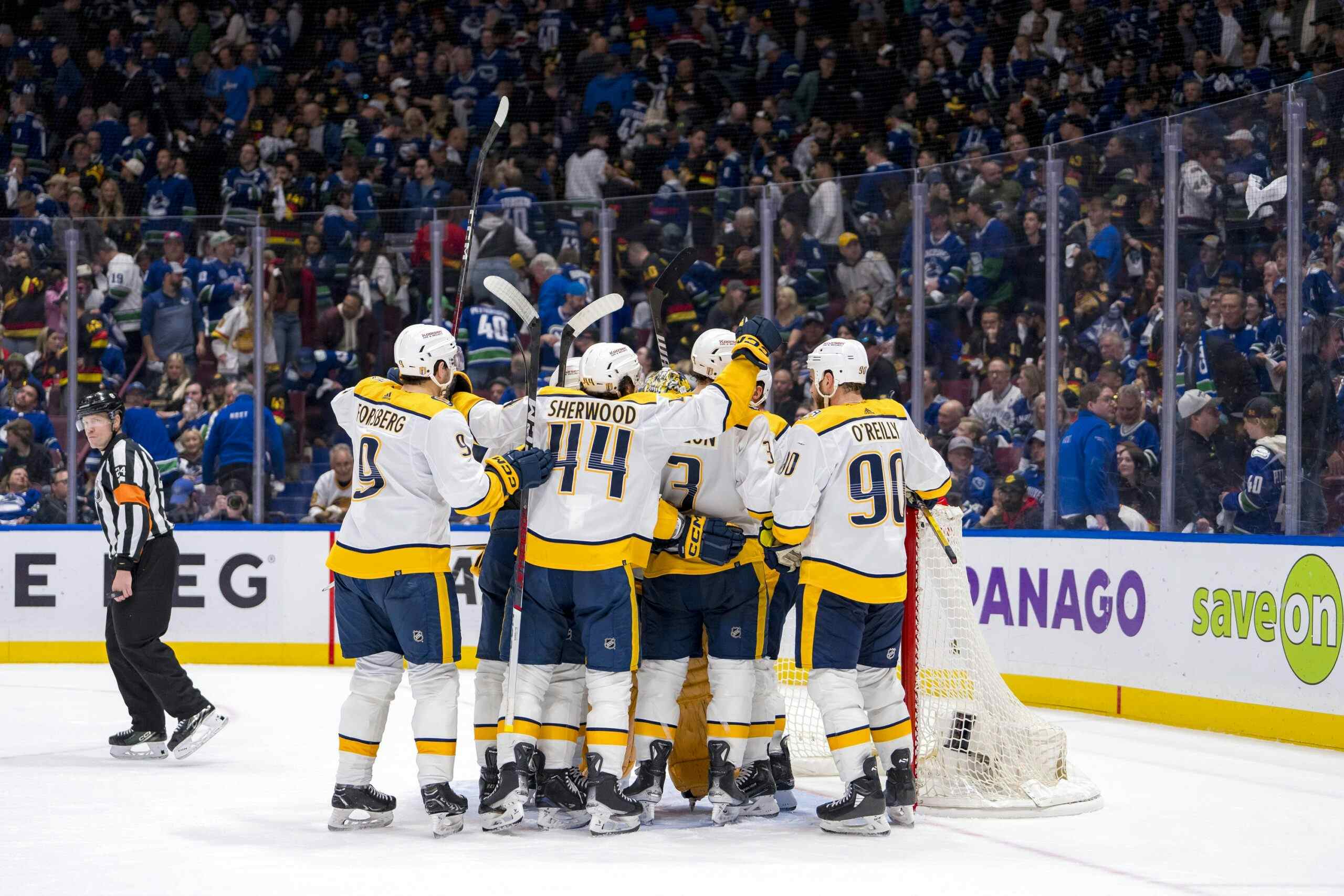Oilers Forwards By Scoring Chances, 2011-12
Last week, we looked at the even-strength scoring chances for and against while individual Oilers defensemen were on the ice; today, we’ll do the same for the forwards. The results, for the most part, match well with consensus opinion on the players involved.
A word on the numbers here: Dennis King has been tracking scoring chances at mc79hockey.com, and the results are added up below. The “Chances Percentage” number is straight forward – it just reflects what percentage of chances were positive. A number above 50% means that the player was on the ice for more scoring chances for than against, while a number below 50% means the opposite.
The Fenwick number is also rather plain: it’s the total of shots and missed shots for while a player was on the ice, versus shots plus missed shots against. Essentially, the player gets a plus every time his line takes a shot that isn’t blocked – even if it misses – and gets a minus every time the opposition manages a shot that isn’t blocked – again, even if it misses the net. Once again, a number above 50% means that the player was on the ice for more shots plus missed shots for than against, while a number below 50% means the opposite (the number is named after Matt Fenwick, the Battle of Alberta blogger who suggested the measure).
| Player | No. | Chances For | Chances Against | Chances Percentage | Fenwick Percentage |
|---|---|---|---|---|---|
| Ryan Nugent-Hopkins | 93 | 81 | 62 | 56.64% | 50.34% |
| Ales Hemsky | 83 | 34 | 30 | 53.13% | 49.55% |
| Taylor Hall | 4 | 73 | 65 | 52.90% | 52.31% |
| Magnus Paajarvi | 91 | 31 | 29 | 51.67% | 48.05% |
| Jordan Eberle | 14 | 77 | 76 | 50.33% | 49.41% |
| Ryan Smyth | 94 | 77 | 86 | 47.24% | 45.47% |
| Shawn Horcoff | 10 | 69 | 81 | 46.00% | 45.38% |
| Ryan Jones | 28 | 49 | 58 | 45.79% | 45.91% |
| Sam Gagner | 89 | 28 | 35 | 44.44% | 41.23% |
| Anton Lander | 57 | 24 | 31 | 43.64% | 38.01% |
| Linus Omark | 23 | 10 | 14 | 41.67% | 49.32% |
| Lennart Petrell | 37 | 21 | 30 | 41.18% | 37.79% |
| Ben Eager | 55 | 16 | 23 | 41.03% | 38.74% |
| Eric Belanger | 20 | 35 | 51 | 40.70% | 42.55% |
Once again, we see that the connection between scoring chances and Fenwick (shots plus missed shots) is a strong one. A perfect correlation would be equal to 1.000; the actual correlation is 0.768 after just 19 games. In other words, if a player is doing well on the shot clock, he’s probably doing well in terms of scoring chances too.
What do the scoring chance numbers tell us? Personally, I see the following:
- The kids – Nugent-Hopkins, Hall and Eberle – are all above 50.0% and Nugent-Hopkins actually leads the way. I’ll grant that they have largely been playing favourable minutes – lots of time in the offensive zone, etc. – but even so they’re getting the job done. It will be interesting to see if they can keep it up now that Tom Renney has switched strategies. If the game against Chicago is any indication, they will.
- Ales Hemsky and Magnus Paajarvi haven’t exactly been getting favourable press, but their numbers here are decent. I’d suggest that in Hemsky’s case it’s an example of offensive ability making up for some chances the other way, while in Paajarvi’s case the opposition simply aren’t getting many opportunities. The fact that they have both been on the ice for an almost identical number of scoring chances – despite Paajarvi having nearly twice as many minutes played – would seem to bear that out.
- Smyth, Horcoff and Jones are all in the red here, but given the minutes they’ve typically played, that’s hardly a surprise and it shouldn’t reflect poorly on them.
- Three players come across rather badly here. Sam Gagner, Linus Omark and Eric Belanger were supposed to offer the Oilers quality depth up front, and they simply haven’t. Linus Omark was demoted after his poor start (he’s injured now, at almost the worst possible time), while the question of where Gagner fits in long term remains an unanswered one – but we’ve heard hints from reputable people, including Oilers Nation’s Robin Brownlee, that he may be traded. Eric Belanger has provided quality in the faceoff circle and on the penalty kill, but he’s been underwhelming on the whole.
- The fourth line is under water right now.
Recent articles from Jonathan Willis





